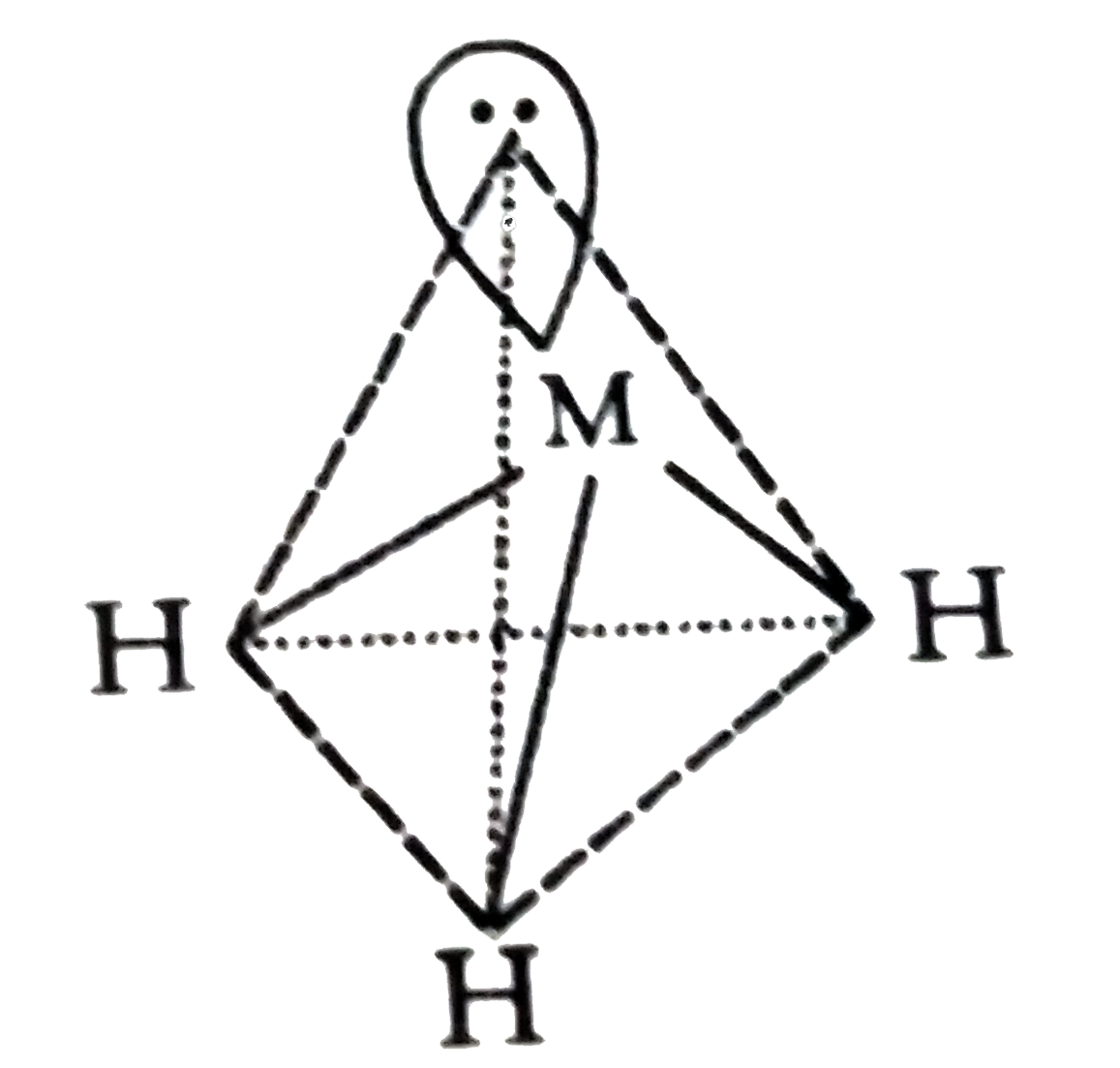Fifth group elements form hydrides to type AH3. The hydrides have a lone pair of electrons. The hydries are reducing in nature and the reducing power is related to the stability of A-H bonds. The hydrides are covalent and low boiling. Their boiling points depends on their ability to from hydrogen bond and their molecular size which decide the intermolcular forces in the hydrides .
The H-M-H bond angle of V group hydrides decrease from 107∘ to 90∘ for NH3 to SbH3 , this is due to:
SbH3<AsH3<PH3<NH3
NH3<PH3<AsH3<SbH3
NH3<SbH3<AsH3<PH3
NH3<PH3<SbH3<AsH3
The correct Answer is:A
In all these hydrides, the central atom 'M' is sphybridized forming four sp-hybrid orbitals. Three of these hybrid orbitals form three sigma (σ) bonds with three hydrogen atoms, whereas the fourth hybrid orbital contains a lone pair. As a result, these hydrides have trigonal pyramidal geometry (or structure).

The H-M-H bond angle decreases from NH3 to SbH3. Now, as we go down the group from nitrogen to bismuth, the size of central atom goes on increasing and its electronegativity goes on decreasing. Consequently, the position of bond pairs of electrons shifts more and more away from the central atom on moving from NH3 to BiH3. For example, the bond pair in N-H bond is more closer to nitrogen than the bond pair in P- Hbond. As a result, the force of repulsion between the bonded pair of electrons in NH3 is more than that in PH3. In general, the force of repulsion of between bonded pairs of electrons decreases as we move from NH3 to BiH3 and, therefore, the bond angle also decreases in the same order.
Topper's Solved these Questions
Similar Questions
Knowledge Check
- Question 1 - Select One
Fifth group elements form hydrides to type AH3. The hydrides have a lone pair of electrons. The hydries are reducing in nature and the reducing power is related to the stability of A-H bonds. The hydrides are covalent and low boiling. Their boiling points depends on their ability to from hydrogen bond and their molecular size which decide the intermolcular forces in the hydrides .
Reducing power of V-group hydrides are in order :ANH3>PH3>Ash3>Sbh3>BiH3BBiH3>SbH3>Ash3>PH3>NH3CPH3>NH3>Ash3>SbH3>BiH3DBiH3>SbH3>Ash3>NH3>PH3 - Question 2 - Select One
Fifth group elements form hydrides to type AH3. The hydrides have a lone pair of electrons. The hydries are reducing in nature and the reducing power is related to the stability of A-H bonds. The hydrides are covalent and low boiling. Their boiling points depends on their ability to from hydrogen bond and their molecular size which decide the intermolcular forces in the hydrides .
The boiling points of the hydrides of V-group elements are in the order :ANH3>PH3>AsH3>Sbh3BNH3>AsH3>SbH3>PH3CSbH3>NH3>AsH3>PH3DAsH3>SbH3>NH3>PH3 - Question 3 - Select One
Fifth group elements form hydrides of type AH3.The hydrides have a lone pair of electrons.The hydrides are reducing in nature and the reducing power is related to the stability of A-H bonds.The hydrides are covalent and low boiling.Their boiling point depends on their ability to form hydrogen bond and their molecular size which which decide the intermolecular forces in the hydrides.
Which of the following statements is true ?AGas (G) reacts with conc NaOH to form OF2BPale Blue gas (E) oxidises alkaline KI to KIO3CPale blue gas (E) in acidic medium reacts with K2Cr2O7 to form a bright blue coloured compound (CrO5)D(B) and (C ) both
Fifth group elements form hydrides of type AH3.The hydrides have a lone pair of electrons.The hydrides are reducing in nature and the reducing power is related to the stability of A-H bonds.The hydrides are covalent and low boiling.Their boiling point depends on their ability to form hydrogen bond and their molecular size which which decide the intermolecular forces in the hydrides.
The boiling poins of the hydrides of V-group elements are in the order :View SolutionTrue order of bond angle among group -16 hydrides is
View SolutionWhich is in the decreasing order of boiling points of V group hydrides ?
View SolutionThermal stability of hydrides of first group elements follows the order :
View SolutionWhich type of elements form ionic hydrides hydrides
View Solution

